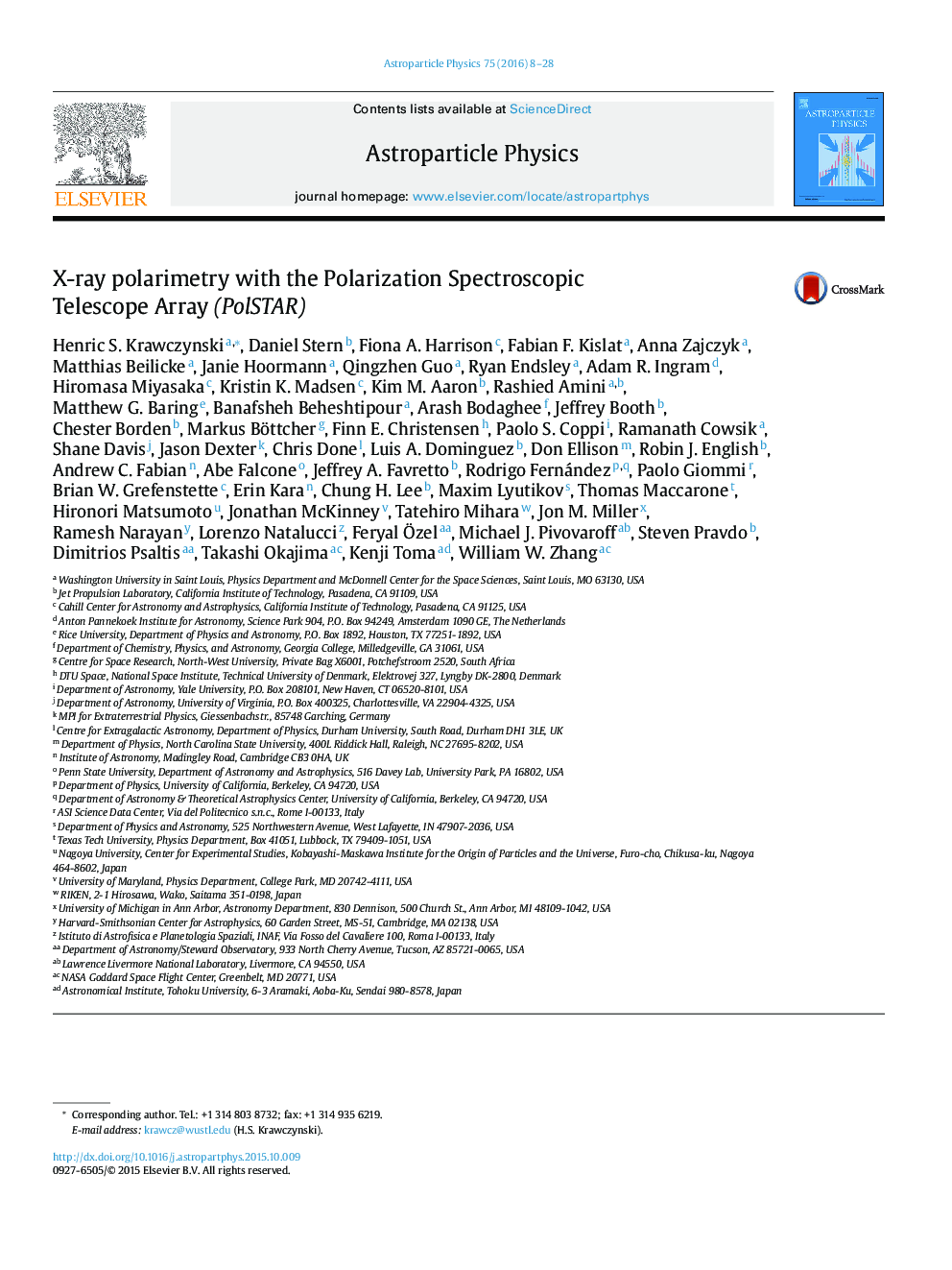| Article ID | Journal | Published Year | Pages | File Type |
|---|---|---|---|---|
| 1770530 | Astroparticle Physics | 2016 | 21 Pages |
Abstract
This paper describes the Polarization Spectroscopic Telescope Array (PolSTAR), a mission proposed to NASA's 2014 Small Explorer (SMEX) announcement of opportunity. PolSTAR measures the linear polarization of 3-50Â keV (requirement; goal: 2.5-70Â keV) X-rays probing the behavior of matter, radiation and the very fabric of spacetime under the extreme conditions close to the event horizons of black holes, as well as in and around magnetars and neutron stars. The PolSTAR design is based on the technology developed for the Nuclear Spectroscopic Telescope Array (NuSTAR) mission launched in June 2012. In particular, it uses the same X-ray optics, extendable telescope boom, optical bench, and CdZnTe detectors as NuSTAR. The mission has the sensitivity to measure â¼1% linear polarization fractions for X-ray sources with fluxes down to â¼5Â mCrab. This paper describes the PolSTAR design as well as the science drivers and the potential science return.
Keywords
Related Topics
Physical Sciences and Engineering
Physics and Astronomy
Astronomy and Astrophysics
Authors
Henric S. Krawczynski, Daniel Stern, Fiona A. Harrison, Fabian F. Kislat, Anna Zajczyk, Matthias Beilicke, Janie Hoormann, Qingzhen Guo, Ryan Endsley, Adam R. Ingram, Hiromasa Miyasaka, Kristin K. Madsen, Kim M. Aaron, Rashied Amini, Matthew G. Baring,
